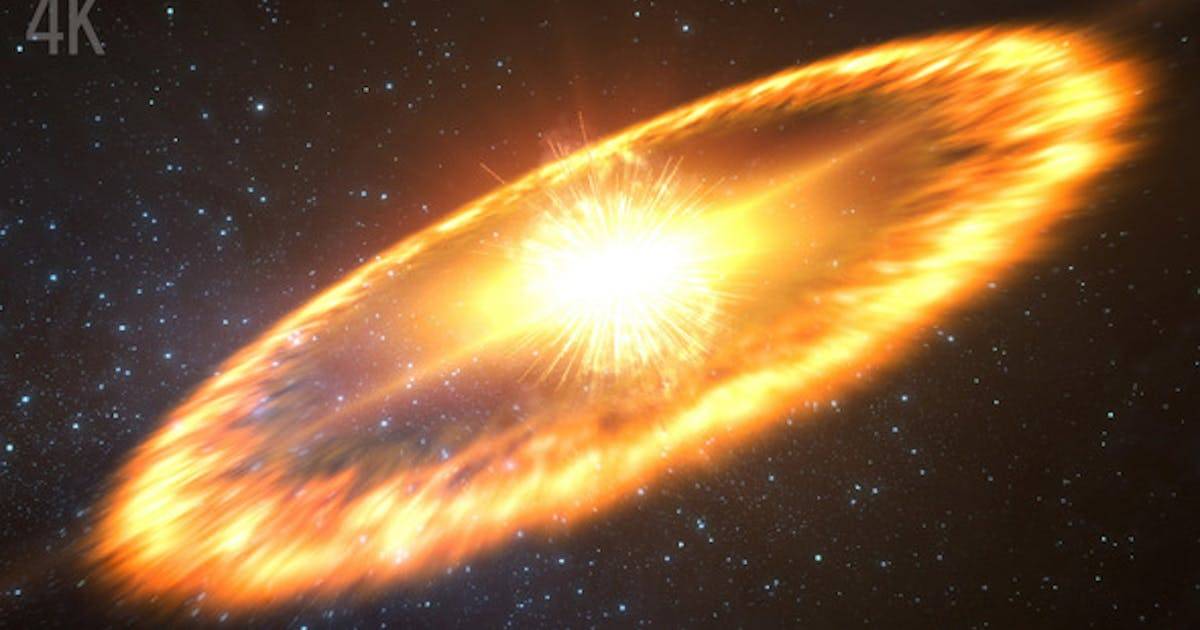Astronomers have recently observed an immense cosmic explosion, the largest ever witnessed in the known universe. Interestingly, no existing physics phenomenon can adequately explain this phenomenon. This explosion is distinguished by a massive fireball spanning nearly 100 times the size of our solar system, emitting light for over three years. Astonishingly, it has emitted around 100 times the energy the sun produces during its 10 billion-year lifespan, raising several intriguing questions. What is the origin of this extraordinary explosion? How did astronomers initially overlook it? Most importantly, could this discovery open doors to new areas of physics?
The journey commenced in 2020 when the Wiki Transient Facility in California detected a powerful flash in the sky. This facility regularly scans the night sky, capturing various celestial occurrences using visible and infrared light. During one survey, an explosion was recorded, initially labeled as "at2021 lwx." At the time, its significance remained unclear due to the unknown distance, making it challenging to determine its true brightness. However, a year later, a team from the University of Southampton conducted a thorough analysis using telescopes from Chile and Spain. They found that the explosion occurred a staggering 8 billion light years away, surpassing the distances of most other luminous flashes. With this newfound information, researchers calculated the event's intrinsic brightness at its source, revealing its astonishing luminosity to be approximately 2 trillion times that of the sun.
The revelation that "at2021 lwx" had gone unnoticed for so long is remarkable. It was only when observed through more advanced telescopes that its true significance came to light. The allure of hidden treasures within the vast cosmos is undeniable.
Curiously, no established physics phenomenon can account for the sheer brilliance displayed by this cosmic event. Equally perplexing is its sustained emission of high-energy levels over three years. What could be the cause of such a remarkable occurrence? Astronomers have meticulously explored potential explanations, including an exploding star (supernova) or a tidal disruption event (TDE).
While a supernova involves a massive star collapsing under gravity, resulting in a detonation that can outshine galaxies, the explosion's brightness exceeds any previously observed supernova. A TDE occurs when a star passes close to a supermassive black hole, generating electromagnetic radiation. Yet, the observed flash's brightness still surpasses typical TDEs.
Some propose a quasar, powered by a supermassive black hole, as a potential explanation. However, the behavior of this event deviates from typical quasars, complicating its classification. A leading hypothesis suggests a colossal accretion event, where an enormous gas cloud is consumed by a supermassive black hole. This process generates shock waves and forms a ring-like structure around the black hole.
Notably, astronomers recently discovered an exceedingly bright gamma-ray burst, but "at2021 lwx" stands out due to its prolonged emission of energy. Such events, while rare, can significantly impact galactic centers over time. Researchers continue their quest to decipher these cosmic mysteries, utilizing new telescopes, advanced equipment, and computer simulations. The pursuit of understanding these awe-inspiring events remains a driving force in our quest for knowledge, igniting our curiosity about the universe's enigmas.


